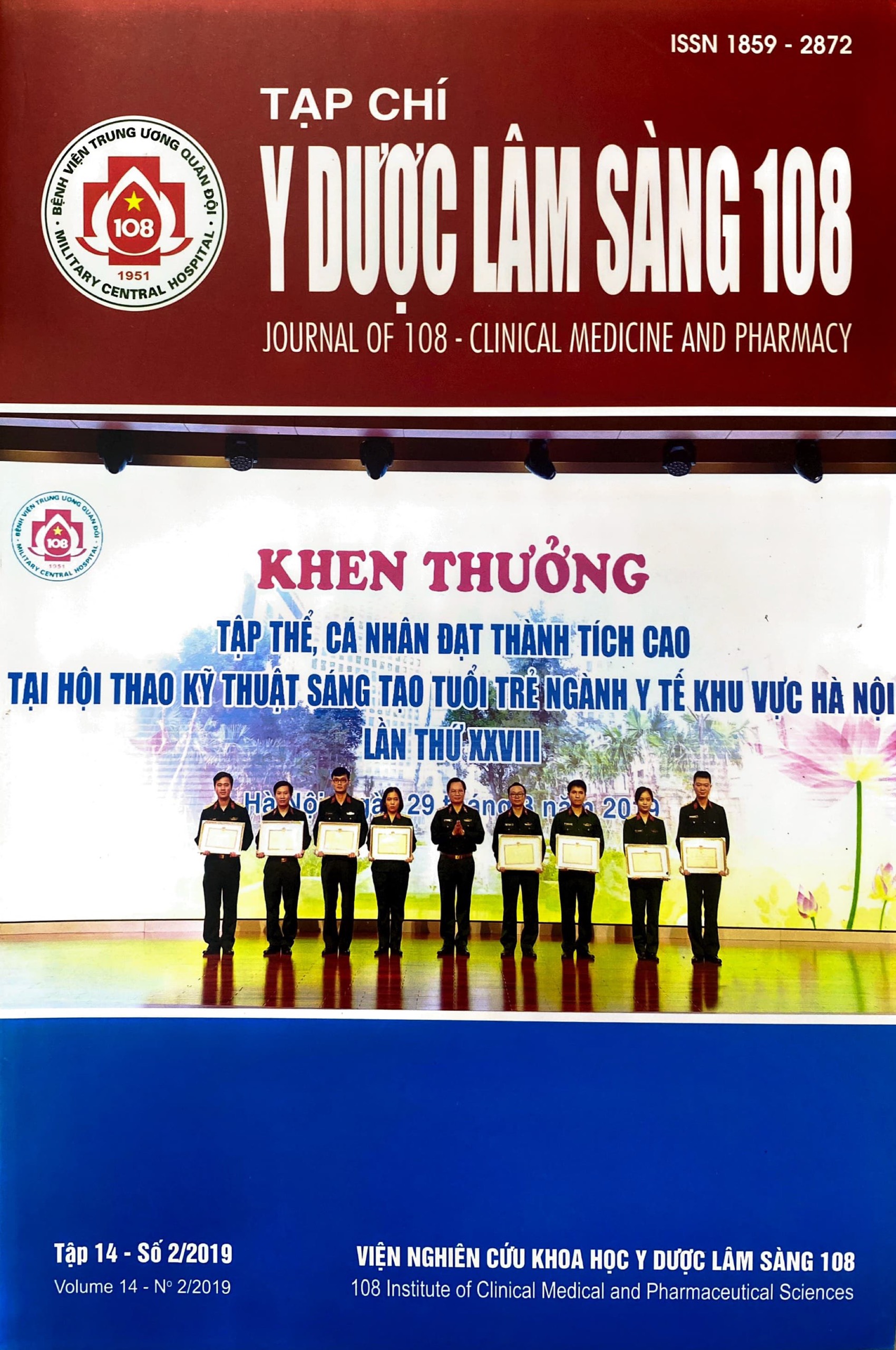Study on the effectiveness of cytokine reduction of continuous veno-venous hemofiltration using oXiris filter in patients with septic shock
Main Article Content
Keywords
Abstract
Objective: To assess the effectiveness of cytokine reduction of continuous veno-venous hemofiltration (CVVH) using oXiris membrane in patients with septic shock. Subject and method: 31 patients with septic shock treated at the Intensive Care Unit of Thu Duc Hospital, 115 Hospital and Bach Mai Hospital from January 2015 to April 2018. Method: Prospective, descriptive, cross-sectional study. Result: Of the 31 patients, 15 patients survived, accounting for 48.4% (group 1), 16 patients died, accounting for 51.6% (group 2). After continuous veno-venous hemofiltration, the concentration of cytokines decreased: TNF-α, IL-6, IL-8 decreased gradually, the difference was statistically significant starting from T2, IL-1b at T3 and IL-10 at T4. Conclusion: CVVH using oXiris filter results in reducing post-filtration cytokines.
Article Details
References
2. Rhodes A et al (2017) Surviving sepsis campaign: International guidelines for management of sepsis and septic shock: 2016. Crit Care Med 45: 486-552.
3. De Vriese AS et al (1999) Cytokine removal during continuous hemofiltration in septic patients. J Am Soc Nephrol 10(4): 846-853.
4. Gotloib L et al (1986) Hemofiltration in septic ARDS. The artificial kidney as an artificial endocrine lung. Resuscitation 13(2): 123-132.
5. Coraim FJ et al (1986) Acute respiratory failure after cardiac surgery: Clinical experience with the application of continuous arteriovenous hemofiltration. Crit Care Med 14(8): 714-718.
6. Staubach KH, Rau HG, Hohlbach G et al (1987) Continuous arteriovenous hemofiltration in shock: A new strategy to lower eicosanoids. Artif Organs 11: 336.
7. Mcdonald Br, Mehta Rl (1990) Transmembrane flux of IL-1b and TNF-a in patients undergoing continuous arteriovenous hemodialysis (abstract). J Am Soc Nephrol 1: 368.
8. Kierdorf H et al (1992) Elimination of tumor necrosis factor by continuous veno-venous hemofiltration (abstract). Ren Fail 14: 98.
9. Cottrell Ac, Mehta Rl (1992) Cytokine kinetics in septic ARF patients on continuous veno-venous hemodialysis (abstract). J Am Soc Nephrol 3: 361.
10. Byrick RJ, Goldstein MB, Wong PY (1992) Increased plasma tumor necrosis factor concentration in severe rhabdomyolysis is not reduced by continuous arteriovenous hemodialysis. Crit Care Med 20(10): 1483-1486.
11. Matsuda K et al (2010) Efficacy of continuous hemodiafiltration with a cytokine-adsorbing hemofilter in the treatment of acute respiratory distress syndrome. Contrib Nephrol 166: 83-92.
12. Turani F (2013) Continuous renal replacement therapy with the adsorbent membrane oXiris in septic patients: A clinical experience. Crit Care 17(2): 63.
13. Rimmele T et al (2009) High-volume haemofiltration with a new haemofiltration membrane having enhanced adsorption properties in septic pigs. Nephrol Dial Transplant 24(2): 421-427.
 ISSN: 1859 - 2872
ISSN: 1859 - 2872
